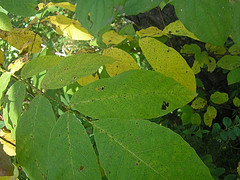Unliked and Unlinked Blogs

I've been reading this paper on the blogosphere:
Herring, Susan C., Lois Ann Scheidt, Inna Kouper, and Elijah Wright (School of Library and Information Science, Indiana U, Bloomington). "A Longitudinal Content Analysis of Weblogs: 2003-2004." In Blogging, Citizenship and the Future of Media. Ed. M. Tremayne. London: Routledge. http://indiana.academia.edu/LoisScheidt/Books/79327/Blogging--citizenship-and-the-future-of-media
It is a random study of blogs, considering such issues as genre, gender and age distribution, authorship, anonymity, frequency of links and comments, stability, variability etc.—whose most surprising claim goes as follows:
"Consistent with earlier findings, the frequency of links and comments in blog entries remained low. This finding is contrary to the popular characterization of the blogosphere as interconnected and conversational" (12).
The overwhelming majority of personal journals is also surprising. I suppose practically all of those go to the long tail of the blogosphere. I put this comment on Lois Scheidt's Academia homepage:
Congratulations for the research. I was somewhat surprised by the findings on the scarcity of comments and of links to other blogs, which certainly doesn't reflect received ideas about the blogosphere. Those ideas must have some kind of basis, though, and it's likely that the answer goes along these lines: a random sample of weblogs tends to take weblogs from the Long Tail, i. e. weblogs which are read by few if any people. While that may reflect a dimension of the weblog phenomenon, it hides another reality: that much weblog reading focuses on the head bloggers, on popular, well-known, well-linked and abundantly commented blogs. This dimension of the blog phenomenon was absent from the study, which might need to be supplemented with a study of weblog reading and linking patterns. Most blogs will include, arguably, a blogroll including some minor blogs and some major blogs, which ensures that major blogs, by definition, get most of the reading and most of the commenting—and set trends in the blogosphere.
i.e. we'd also need a random sample not merely of blogs but of blog reading sessions. Counter results, and not merely individual blogs, should be taken into consideration in a random study.
0 comentarios